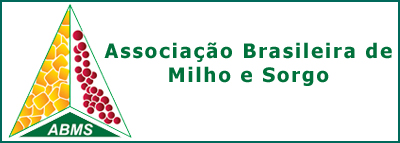ALTERNATIVAS DE CONTROLE QUÍMICO PARA CAPIM-AMARGOSO (Digitaria insularis) NA CULTURA DO MILHO
DOI:
https://doi.org/10.18512/1980-6477/rbms.v16n3p578-586Keywords:
Zea mays, herbicida, planta daninhaAbstract
RESUMO – O presente estudo teve por objetivo avaliar a eficácia de herbicidas pós-emergentes registrados para a cultura do milho, assim como futuras alternativas de controle químico, no manejo de biótipos de capim-amargoso resistente ao glyphosate. Três experimentos, em condição de casa de vegetação, foram realizados no delineamento de blocos ao caso, com três repetições. Herbicidas de reconhecida eficiência agronômica no controle de gramíneas na cultura do milho (tembotrione, mesotrione e nicosulfuron) e futura alternativas de controle químico (haloxyfop-p-methyl e ammonium-glufosinate) foram aplicados em diferentes períodos de desenvolvimento sobre o capim-amargoso. Foram avaliados os sintomas de intoxicação e a porcentagem de redução do acúmulo da massa de matéria seca (MMS) da infestante após a última avaliação de controle. Os herbicidas nicosulfuron, haloxyfop-p-methyl e ammonium-glufosinate ocasionaram a morte da planta independentemente do momento de aplicação. Tembotrione e mesotrione, apesar de reduzirem a porcentagem de acúmulo da MMS, não ocasionaram morte das plantas. Conclui-se que o nicosulfuron se caracteriza como importante ferramenta no controle de capim-amargoso. As moléculas haloxyfop-p-methyl e ammonium-glufosinate apresentam potencial para serem utilizadas como alternativas de controle químico da infestante. Os herbicidas tembotrione e mesotrione, apesar de reconhecida ação graminicida, não são indicados para o controle do capim-amargoso.
Palavras-chave: Zea mays, herbicidas, resistência, planta daninha.
ALTERNATIVES OF CHEMICAL CONTROL FOR SOURGRASS (Digitaria insularis) ON MAIZE CROP
ABSTRACT – This study aimed to evaluate the efficacy of registered herbicides for weed control in maize crop and to test future alternatives of chemical control for management of sourgrass biotypes resistant to glyphosate. Three experiments, in the greenhouse, were carried out in a randomized block design with three replicates. Herbicides of recognized agronomic efficiency in grass control on maize (tembotrione, mesotrione and nicossulfuron) and future alternatives of chemical control (haloxyfop-p-methyl e ammonium-glufosinate), as well as, standard herbicide treatment used on maize off-season glyphosate resistant (glyphosate + atrazine), were sprayed on sourgrass plants at different growth periods. The parameters evaluated were intoxication symptoms and the decrease in dry mass accumulation. The herbicides nicossulfuron, haloxyfop-p-methyl and ammonium-glufosinate caused the death of plants, regardless of their developmental stage. In spite of causing a decrease in weed dry mass accumulation, tembotrione and mesotrione did not cause plant death. It is concluded that nicossulfuron is characterized as an important tool in control of sourgrass. The molecules haloxyfop-p-methyl and ammonium-glufosinate have potential to be used as alternatives to control this infestant. The herbicides tembotrione and mesotrione despite recognized grass control were notindicated to control of sourgrass.
Keywords: Zea mays, herbicide, resistance, weed.
Downloads
Published
How to Cite
Issue
Section
License
Authors retain copyright and grant the journal right of first publication with the work simultaneously licensed under the Creative Commons Attribution License that allows the sharing of work and recognition of the work of authorship and initial publication in this journal.
Authors are able to take on additional contracts separately for non-exclusive distribution of the version of the paper published in this journal (eg, in an institutional repository or publish as a book), with acknowledgment of its initial publication in this journal.
Authors are permitted and encouraged to post their work online (eg, in institutional repositories or on their website) at any point before or during the editorial process, as this may leadto productive exchanges, as well as increase the impact and citation of published work.



